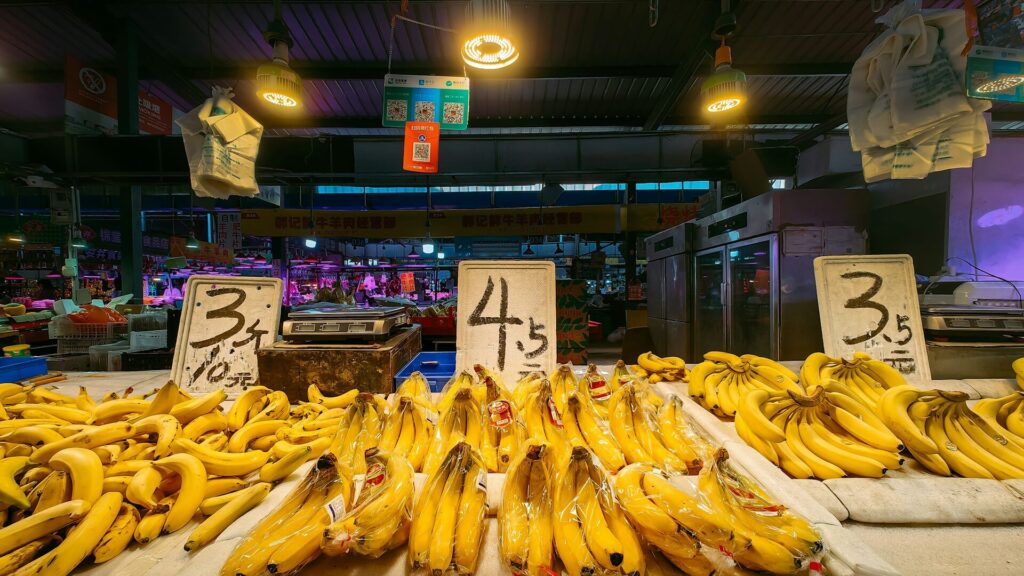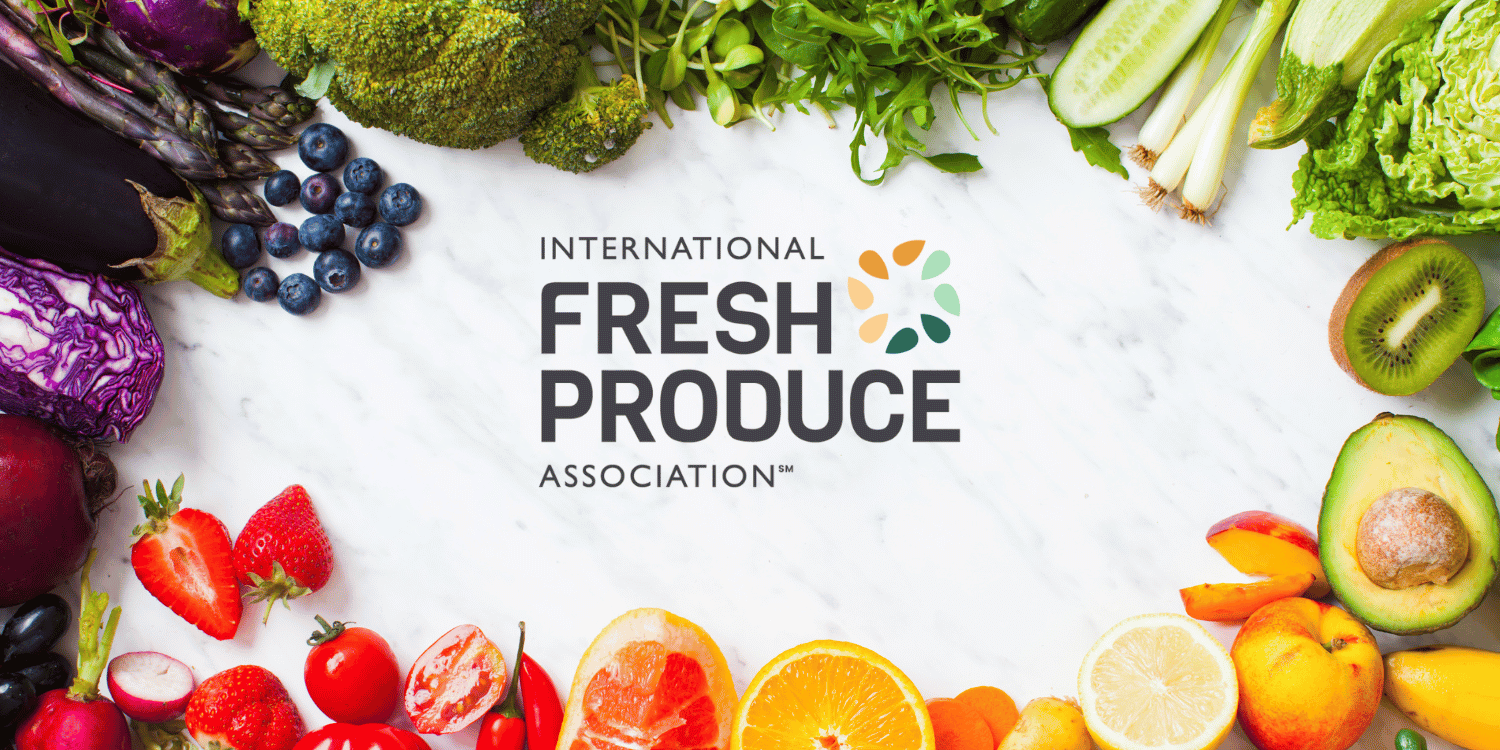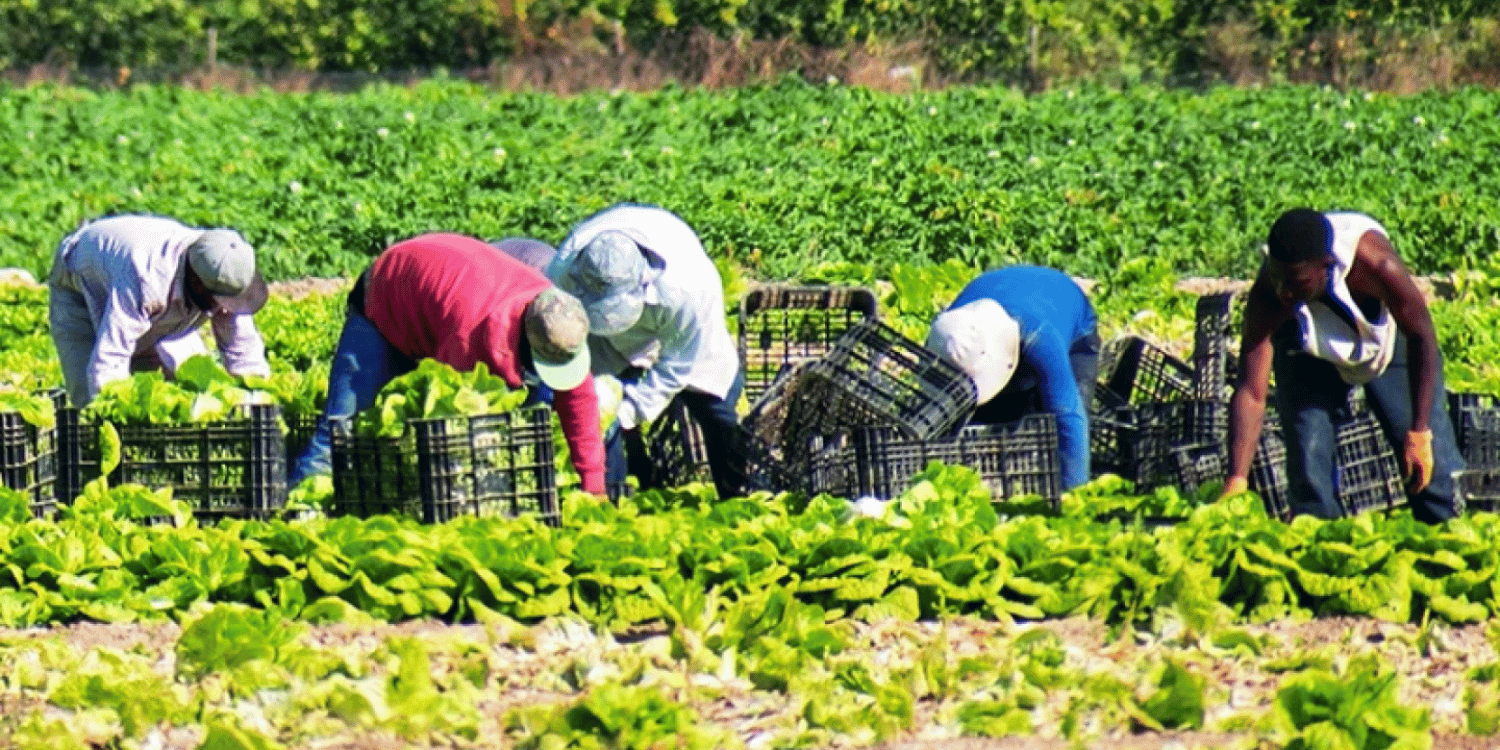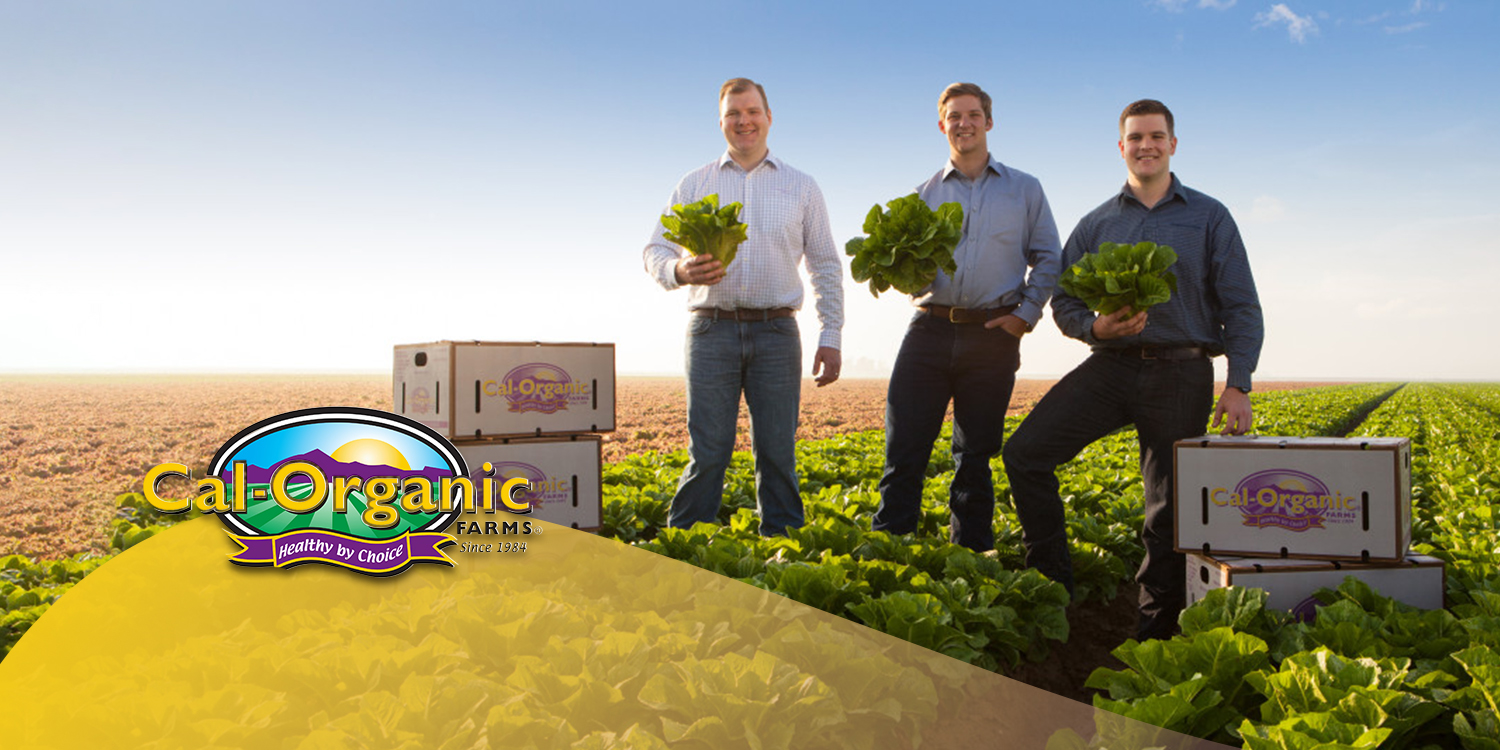Understanding the dynamics of supply chain management for any product is critical, and bananas are no exception.
This tropical fruit has its unique advantages as well as challenges when it comes to its efficient distribution.
Our focus in this article is to discuss specific strategies that aid in its effective supply chain management.
We dig in into factors such as proper storage, transport, ripening management, and dealing with perishability.
In addition to that, we also touch on the impact of socio-economic environments on banana supply.
By understanding these aspects, industry professionals can better navigate the complexities of bringing bananas from the farm to the consumer.
- Establish robust partnerships with banana farmers.
- Adopt advanced technology for efficient banana cultivation.
- Optimize banana harvesting practices for productivity.
- Implement automated banana sorting process for quality.
- Incorporate fair trade principles in banana supply chain.
These key takeaways only scratch the surface of what the banana supply chain management encompasses. In the following sections of this write-up, we explore related critical subjects from market dynamics to detailed practices in banana processing techniques, which can provide relevant insights for you.
By continuing to peruse this article, you will be introduced to the economic implications behind banana supply chain management, as well as the socio-environmental factors that could greatly influence production.
Not limiting to that, we also shed light on the role of government regulations in shaping the global banana market. So keep on reading to gain a more comprehensive understanding of this complex and fascinating topic.
Contents
- Strategies For Banana Supply Chain Management
- 1. Establish Robust Partnerships with Banana Farmers
- 2. Use advanced technology for banana cultivation
- 3. Implement Efficient Banana Harvesting Practices
- 4. Set up automated banana sorting process
- 5. Focus on Sustainable Packaging for Transport
- 6. Use Traceability Systems for Shipment Tracking
- 7. Ensure Quality Control During Storage
- 8. Create Effective Distribution Networks
- 9. Invest in strong retail collaborations
- 10. Incorporate Fair Trade Principles
- The Bottom Line
Strategies For Banana Supply Chain Management
1. Establish Robust Partnerships with Banana Farmers
In Short: Creating effective banana supply chain management necessitates robust partnerships with farmers, fostering mutual respect, understanding, and shared goals through transparent communication and due diligence. Additionally, this relationship’s success hinges on long-term commitment, fair trade principles, skill enhancement programs, and the improvement of farmers’ economic and social conditions.
The initial step in creating effective banana supply chain management requires the establishment of robust partnerships with banana farmers. These farmers are the backbone of any bananas’ journey from the farm to the consumer’s table. Therefore, their role in the production and distribution process is not to be underestimated.
To establish these partnerships, it is crucial to engage in open, transparent communications with the farmers. In this way, both parties are assured of their roles, expectations, and potential revenue. This trust fosters a relationship geared towards production efficiency and overall business growth.
Farmers should also be involved in planning and decision-making processes. Their insights into factors affecting production such as weather patterns and crop diseases may contribute significantly to the company’s strategic planning on cultivation and harvesting.
In establishing any partnership, conducting appropriate due diligence is also essential. Understanding the farmer’s credibility, experience, financial status, and commitment can help in ensuring a mutually beneficial relationship.
To further strengthen the partnership, offering training and education programs to the farmers can be highly beneficial. This will help in enhancing their skills, understanding of best agricultural practices and technologies, ultimately leading to better productivity and quality produce.
Consider the following strategies to establish a solid partnership with banana farmers:
- Engage in constant communication and trust-building activities.
- Involve farmers in decision-making processes and strategic planning.
- Conduct in-depth due diligence before entering into any agreement.
- Offer training and educational programs to farmers for skill enhancement.
A partnership with banana farmers should not be a one-time affair but rather a long-term commitment. Regularly revisiting and reevaluating the terms of partnership to ensure both parties are still benefiting from the relationship is important.
It’s important to remember, profits should not be the only driving factor for these partnerships. Embrace the principle of fair trade, ensuring that farmers receive not only a fair price for their bananas, but also the means to secure a sustainable farming practice.
A progressive partnership also values the welfare of the farmers. Providing incentives and ensuring good working conditions is fundamental in cultivating a healthy work relationship. In addition, the partnership should seek to improve the farmers’ economic and social conditions which will ensure their continued commitment and productivity.
In essence, establishing a robust partnership with the banana farmers is a significant stride in banana supply management chain. It is the first yet crucial step that can determine the success of the following steps in the management chain.
Therefore, the very essence of these partnerships must be grounded on mutual respect, understanding, and a combined effort to achieving a shared vision of an efficient and successful banana supply chain.
2. Use advanced technology for banana cultivation
In Short: Advanced technology, like precise irrigation systems and drone monitoring, substantially improves efficiency and quality in banana cultivation and supply chain management. Factors like farm size, climate conditions, local regulations and available resources influence the choice of technology, which extends from growing to post-harvest processes including packaging, transportation, and customer assurance through QR codes.
In the era of rapid technological advancement, the use of advanced technology in banana cultivation is non-negotiable for any company striving for efficiency and quality in their supply chain.
With sophistication in agronomic practices and the advent of precision agriculture, farming is increasingly data-driven and reliant on cutting-edge technology.
For banana cultivation, the employment of advanced irrigation systems plays a significant role in efficiently managing water resources and ensuring the health and productivity of banana plants.
These high-tech systems are capable of detecting soil moisture levels and accurately determining the required irrigation amount, eliminating the common mishaps of over- or under-watering.
Drones equipped with high-resolution cameras and sensor technology can monitor the health of banana crops from above, identifying issues such as pest infestations, diseases or nutrient deficiencies faster and more accurately than the human eye, drastically reducing crop loss and increasing yield quality.
It’s crucial to remember that not every technological solution would suit all banana farms. Specific strategies need to be deployed in different contexts. Here’s a list outlining the crucial factors influencing the choice and efficient use of advanced technologies in banana farming:
- Size of the farm: Larger farms may necessitate more automated solutions, while smaller ones might prioritize cost-effective, sustainable methods.
- Climate conditions: Farms in different climatic regions may require different technologies for irrigation, pest management, and nutrient supply.
- Local regulations: The policies governing the use of drones and other advanced equipment in agriculture vary widely across regions and must be factored in.
- Resources: The availability of financial resources and skilled labor will determine the extent of technology implementation.
Technology in banana cultivation is not limited to the growing phase but extends to the post-harvest handling process as well.
Upon harvest, innovative packaging and transportation technologies can ensure that the bananas are protected from physical damage and adverse environmental conditions, preserving their freshness during storage and transit.
Moreover, the advent of digital platforms allows for the easy tracking and coordination of banana shipments, ensuring accountability and transparency in the supply chain.
Pro Tip: To ensure efficiency and quality in banana cultivation, embrace advanced technology that includes precision agriculture, advanced irrigation systems, drones with high-resolution cameras, and sensor technology.
Technology also plays an essential part in assuring consumers of the quality and safety of the bananas they purchase. By incorporating quick response (QR) codes on banana packaging, consumers can trace the journey of their bananas from the farm to their shopping bag, adding an extra layer of trust and satisfaction.
All in all, advanced technology is an essential ally on the journey to achieving responsible and efficient banana supply chain management.
3. Implement Efficient Banana Harvesting Practices
In Short: Implementing efficient banana harvesting practices integral to supply chain success, including using modern tech, training farmers, and employing a structured schedule. Ensuring worker wellbeing, using sustainable practices, and utilizing digital technology can minimize losses, improve quality, and maintain consistent supplies.
The efficiency of banana harvesting practices substantially contributes to the overall success of a banana supply chain management strategy.
Effective banana harvesting practices are crucial because post-harvest losses can be greatly minimized.
One way to foster efficiency is through taking advantage of modern technological advancement.
For instance, the use of specialized harvesting machinery can significantly expedite operations, considering traditional manual harvesting can be laborious and time-consuming.
This not only enables quick delivery of freshly picked bananas to sorting facilities, but it also helps reduce the physiological stress on the bananas, which can affect their quality.
There are some pertinent approaches that can be implemented to optimize banana harvesting practices.
- Training farmers on the appropriate timing for harvesting ripe bananas.
- Equipping farmers with the necessary skills to handle and transport harvested bananas safely.
- Implementing a structured harvesting schedule to ensure a steady and continuous supply of bananas to the market.
These practices, when well-implemented, can significantly increase productivity and ensure consistent quality of harvested bananas.
Furthermore, embracing sustainable harvesting strategies is equally important. Backed by research, sustainable practices, including reducing the use of pesticides, managing waste effectively, and minimizing energy consumption, play a important role in maintaining the viability of banana plantations in the long run.
Properly implementing such sustainable practices can greatly contribute to the overall ecological balance and ensure the preservation of valuable biodiversity within the plantation.
Another critical aspect of efficient banana harvesting lies in ensuring the workers’ wellbeing.
This can be achieved by providing essential amenities, enforcing safety guidelines, and offering fair wages which, in turn, not only boosts their morale but also enhances their productivity.
Moreover, embracing digital technology to track and monitor the harvesting process can provide valuable, real-time insights towards improving operational efficiency.
Digital technologies such as artificial intelligence (AI) and machine learning can help in accurately predicting the optimal time for harvesting, minimizing harvest-related losses, and ultimately improving the quality and consistency of the harvested bananas.
Important: Implementing efficient banana harvesting practices, involving training farmers, following a structured schedule, and leveraging digital technologies, can significantly increase productivity, enhance worker wellbeing, and ensure consistent quality of harvested bananas, ultimately contributing to the overall success of a banana supply chain management strategy.
In essence, implementing efficient banana harvesting practices is undeniably an integral part of a comprehensive banana supply chain management strategy.
These practices can foster sustainability, boost productivity, enhance workers’ wellbeing, and improve the overall quality of the harvested bananas, which in turn, consistently ensures a steady supply of quality bananas in the market.
4. Set up automated banana sorting process
In Short: Setting up an automated banana sorting process, employing conveyors, vision systems, sensor technology, and robotic arms, greatly enhances the banana supply chain management by reducing labour, increasing efficiency, and overlooking banana quality. This system, though requiring investment and regular maintenance, promises long-term benefits such as increased productivity and significant improvement in overall supply chain efficiency and accuracy.
In the journey of refining the banana supply chain management, one significant step is to set up an automated banana sorting process.
This technological evolution is essential, given the huge scale of banana production globally.
Incorporating automation in banana sorting helps minimize manual labor, in turn, reducing the risk of errors and inaccuracies, and increasing efficiency.
Unlike manual sorting, automated systems employ advanced technology to differentiate and segregate bananas based on various factors, including their size, ripeness, and quality.
This technology-based approach allows for a quicker and more precise sorting process.
Also, it assures consistency, as every banana will be evaluated against a consistent standard, rather than subjected to human error or bias.
Now, envision how an automated banana sorting process can be structured:
- Mechanical conveyors – They are used to move the bananas through the sorting system.
- Vision systems – They assess the quality of the bananas based on their appearance, color, and any visible defects or diseases.
- Sensor technology – Sensors identify and sort bananas according to their size, weight, and density.
- Robotic arms – These arms, equipped with grippers, handle the sorted bananas, placing them in their corresponding packages or trays.
This setup for automated banana sorting is not only innovative but significantly beneficial for the management of the banana supply chain.
However, it’s pivotal to remember that these automated systems must be properly maintained for optimum functionality.
Regular inspections and immediate repairs in case of any faults or breakdowns are imperative, to ensure the system runs smoothly without any hitches.
Indeed, the initial investment involved in setting up such an automated process might seem substantial, but the long-term benefits, in terms of increased productivity and efficiency, are quite impressive.
A well-implemented automated system would definitely prove to be a game-changer in the banana supply chain.
Pro Tip: To enhance efficiency and productivity in the banana supply chain, set up an automated banana sorting process, using technology for precise sorting, and remember to properly maintain the system for optimum functionality.
Consider the precision and accuracy it enables, the elimination of manual errors, the time and labor saved, and the remarkable influence it can have on the overall efficiency and productivity of the supply chain.
With this, there’s no doubt that automation in banana sorting is a crucial strategy, a keystone, for effective banana supply chain management.
5. Focus on Sustainable Packaging for Transport
In Short: To minimize environmental impact, banana supply chains must prioritize sustainable packaging by selecting recyclable, biodegradable materials and reducing waste. By implementing sustainable packaging practices, companies not only reduce their carbon footprint, but also enhance their relationship with eco-conscious consumers and stakeholders.
Recognizing the significant impact that packaging has on the environment, a sustainable approach to packing bananas for transport is essential in responsible supply chain management.
Within the context of the banana industry, substantial concerns regarding plastic waste and carbon emissions have been raised, making this a topic not only critical but also timely.
Sustainable packaging means using materials that are recyclable, biodegradable, and responsibly sourced.
By changing our approach to packaging, we can logistically contribute not just to our financial bottom line but also to our planet.
Reducing the environmental footprint of our packaging should be a core goal for every company engaged in banana supply chain management.
Such a strategic move would not only resonate well with increasingly eco-conscious consumers, it also aligns with wider global initiatives on sustainability.
Here are a number of ways we can foster a sustainable packaging approach in our supply chain:
- Material Selection: Choose packaging materials that are recyclable, reusable, or made from a renewable source. This could range from cardboard boxes to bioplastics.
- Reduced Packaging: Limit the amount of packaging used. An efficient packaging design would use the smallest amount of material necessary, minimizing waste.
- Reusable Packaging: Opt for returnable or reusable packaging systems where possible. Reusing packaging multiple times before acquiring a new one is an effective way to extend its lifecycle and reduce waste.
- Eco-friendly Printing: Utilize sustainable inks and processes in the printing of packaging materials.
There may be upfront costs involved in transitioning to sustainable packaging, but the long-term benefits significantly outweigh these initial outlays.
Through sustainable packaging, we can save resources, reduce waste, minimize our carbon footprint, and show our commitment to protecting the environment.
Furthermore, companies with a clear focus on sustainability are more likely to foster stronger relationships with stakeholders, partners, and customers who are increasingly looking for responsibility and ethics in the businesses they engage with.
Choosing sustainable packaging is a strategy that not only improves our philosophy towards the environment but also provides a competitive advantage, shaping a more positive image of the company in the consumer’s mind.
Important: Prioritizing sustainable packaging for transport is key in creating a responsible and successful banana supply chain, which involves selecting materials that are recyclable, biodegradable, and responsibly sourced, thus reducing environmental impact and fostering stronger relationships with eco-conscious stakeholders, partners, and customers.
In every step of our banana supply chain, we can make a difference by considering our environmental impact and making conscious decisions to implement more sustainable practices.
Thus, by prioritizing sustainable packaging for transport, we will be able to craft a more responsible and successful banana supply chain.
6. Use Traceability Systems for Shipment Tracking
In Short: Using traceability systems in banana supply chain management is crucial for tracking shipments, increasing transparency, and improving transport efficiency. These sophisticated systems, powered by technologies like RFID, GPS, and IoT, also promote sustainability and consumer trust by allowing real-time monitoring of shipment location and conditions, ensuring product quality, and verifying responsible sourcing.
Navigating the vast labyrinth of banana supply chain management, an indispensable tool of importance to note is the use of traceability systems for shipment tracking.
Leveraging the power of advanced technology, traceability systems provide a comprehensive solution that assists in tracking each shipment from the time of dispatch, en route, until they reach their final destination.
These sophisticated systems ensure a smooth transition of goods from one point to another, thereby increasing the dependability and efficiency of transport.
For every successful organization dealing with banana supply chain management, transparency in operations is not just an option, but a prerequisite.
Therefore, an advanced traceability system allows all stakeholders, be it producers, transporters, or retailers, to obtain information regarding the status and location of the bananas at any given moment.
Not only does this eliminate any uncertainty or ambiguity, but it also enables better decision-making through the access to real-time data.
Speaking on the technological aspects of traceability systems, one cannot ignore the role of the following aspects:
- Radio Frequency Identification (RFID), which automates tracking via radio waves.
- Global Positioning System (GPS), enabling real-time monitoring of shipment location.
- Internet of Things (IoT), facilitating a network of interconnected devices for seamless communication.
These nuanced aspects of technology play a phenomenal role in powering traceability systems for shipment tracking.
Furthermore, the implementation of traceability systems is a tangible step towards ensuring the product’s quality and safety.
This is because these systems help monitor any undue fluctuations in temperature, humidity, or other environmental factors during transit, which may otherwise harm the product’s freshness and overall quality.
Moreover, with the world becoming increasingly conscious about sustainability, traceability systems promote accountability and ethical business practices.
Bananas that are tracked and verified through such systems can be labeled as ‘responsibly sourced’, thereby making a positive statement about the brand’s commitment to fair trade and sustainability.
Pro Tip: For effective banana supply chain management, implement traceability systems to enhance shipment tracking, secure product quality, increase transparency, and foster a more sustainable and consumer-friendly environment.
Thus, in a world where the customer’s need for ‘information’ regarding their food is constantly growing, traceability systems for shipment tracking comply with these needs, enhancing the customer’s trust and brand loyalty.
Therefore, the indispensable nature of traceability systems in successful banana supply chain management cannot be emphasized enough. Not only do they categorically enhance logistic operations with transparency and accountability, but they also contribute towards creating a more sustainable and consumer-friendly environment.
7. Ensure Quality Control During Storage
In Short: For effective banana supply chain management, quality control during storage is crucial, involving maintaining a consistent temperature of 13-14 degrees Celsius, ensuring 85-90% humidity, voiding crowding, and regular inspecting. Additionally, crucial factors include pre-arrival facilities cleansing, the use of latest storage technology, traceability, segregation based on maturity, regular staff training, and good stakeholder relationships.
Part of a successful banana supply chain management is ensuring quality control during the storage process. Failure to uphold quality control could result in significant losses due to poor fruit quality or even spoilage.
In the storage phase, maintaining consistent temperature is crucial. Bananas are highly sensitive to their storage environment, requiring a temperature of about 13 to 14 degrees Celsius for optimal storage.
This temperature range should be strictly adhered to, avoiding fluctuations, which could trigger premature ripening or degradation of the bananas.
Alongside temperature, control over the humidity level is also essential. The humidity in the storage area should be maintained at about 85-90% to prevent dehydration.
Avoiding crowded storage is another factor to consider. Overstocking the space may lead to increased heat and accelerated ripening.
Bananas produce ethylene gas, a natural ripening agent. In a crowded condition, bananas might produce excessive ethylene gas, which speeds up the ripening process and can lead to spoilage.
Inspection routines serve an essential role in ensuring quality control. Regular checks help identify any issues – such as disease or undesirable ripening – and respond quickly before considerable damage is done.
Let’s talk a bit about the main components needed to ensure quality control during storage:
- Maintaining a consistent temperature
- Controlling the humidity level
- Avoiding overcrowding conditions
- Establishing frequent inspection routines
Also, before the arrival of a new batch of bananas to the storage facility, there should be a cleansing process to remove any potential residual ethylene left by the previous stock.
Also, investing in the latest technology for storage is beneficial for quality control. Advanced cooling and dehumidification systems optimize the necessary environmental conditions.
For traceability, it is crucial to mark each banana batch with relevant details such as the date of harvest, farm details, etc. This helps trace any quality issues back to their source.
Segregating bananas based on their maturity level upon arrival can play a significant role in managing the ripening process during storage.
In addition, regular training for the staff handling the storage process can help them understand the importance of quality control and how it affects the profitability of the entire supply chain.
Maintaining good relationships with the stakeholders involved – including farmers, transport providers, and retailers – can facilitate better communication and improvements in the storage processes.
8. Create Effective Distribution Networks
In Short: A successful banana supply chain strategy should incorporate diverse transportation modes, automation, optimized planning, cold chain logistics, strategic farm location and contingency plans. These components contribute to efficient distribution, protecting product quality and ensuring rapid delivery of fresh bananas to consumers.
Understanding the importance of efficient logistics, it’s important to understand how an effective distribution network is fundamental in the successful implementation of a banana supply chain management strategy.
Efficient distribution does not only translate to faster delivery times, but also to the protection of product quality.
This is particularly critical when considering the fragile nature of bananas and their limited shelf life.
An optimal distribution network ensures that harvested bananas reach consumers in the shortest possible time, maintaining their freshness and quality.
Several broad strategies help create such networks.
Firstly, establishing strategic alliances with logistics providers can be particularly beneficial.
This allows the banana supply chain to leverage on the infrastructure, reach, and experience of established logistics companies.
Here are few strategies to build effective distribution networks:
- Diversifying modes of transport: Depending upon the distance and location of the markets, a mix of road, sea, and air transport can be used. This helps expedite delivery and ensure product freshness.
- Automating logistics management: Using software for scheduling, tracking, and managing deliveries can provide real-time insights, reducing inefficiencies and increasing delivery speed.
- Optimizing route planning: Regular review and optimization of delivery routes can circumvent delays and ensure fastest transportation times.
Additionally, investing in cold chain logistics is essential given the perishability of bananas.
Temperature-controlled storage and transport can dramatically decrease spoilage rates and increase the overall quality of delivered bananas.
Secondly, proximity to market is a significant factor in determining distribution efficiency.
Hence, considerations should be given to the strategic location of farms and storage facilities in relation to the market.
Where possible, farms should be located with easy access to major transport routes and markets.
Thirdly, having a plan for network disruptions is essential.
Distribution networks can be affected by various factors like extreme weather, labor strikes or road accidents.
Contingency plans help manage such disruptions, without significantly affecting banana deliveries.
Lastly, always remember that effective distribution networks need regular reviews and improvements.
Changes in market dynamics, new technologies, and logistical challenges make it a necessity to continually optimize the distribution strategy for effective banana supply chain management.
9. Invest in strong retail collaborations
In Short: Investing in strong retail collaborations can optimize your banana business by providing access to new markets, ensuring consistent demand, and increasing sales. Success relies on understanding retailer needs, ensuring high-quality and timely deliveries, and fostering a mutually beneficial partnership.
The overhaul of the banana supply chain requires investment in the formation and strengthening of strategic retail collaborations.
This means nurturing partnerships with various types of retailers, from small, local outfits to large, multinational grocery chains.
These collaborations can greatly enhance the reach and visbility of your banana business, in turn driving growth and increased profitability.
Let’s consider the benefits such collaborations can bring about.
- Improved access to new and broader markets
- Consistent demand because of their large customer base
- Opportunities for cross-promotion leading to increase product visibility
- The ability to negotiate better terms of trade due to bulk purchases
- Increased revenue through high-volume sales
But forging strong retail relationships begins with understanding the peculiar needs and expectations of each retailer.
It’s crucial to tailor your offerings to suit their unique customer profile and demographic, whether that’s offering bananas of specific sizes, grades, or ripening stages, or providing bananas in special packaging.
Strong retail collaborations also require consistent delivery of quality bananas, adherence to agreed delivery schedules, and effective handling of any delivery issues that may arise.
In essence, businesses need to prove themselves to be reliable suppliers to gain trust and cement these relationships.
This also involves open and regular communication about price fluctuations, changes in harvest quantities, among other key aspects of the banana business that may affect the retailer.
Amid this, it’s important to remember that your collaborations with retailers should not be a one-way street where only you benefit.
Approach these relationships with a mutual benefit mindset, focusing on how you can create value for your retail partners just as much as for your own business.
Whether that’s by offering promotional support, sharing consumer insights, or being flexible with payment terms, aim to be a valuable partner, not just a supplier.
At the end of the day, investing in strong retail collaborations can substantially optimize your banana supply chain, leading to sustainable growth and success in the long run.
10. Incorporate Fair Trade Principles
In Short: Incorporating fair trade principles into supply chain management boosts transparency, strengthens relationships, improves working conditions, and emphasizes environmental sustainability. This integration, which requires a transition from traditional models, not only enhances ethical practices but also increases brand credibility and meets the evolving demands of ethically conscious consumers.
When we consider the concept of supply chain management, there is an important pillar that we need to acknowledge and embed in our operational standards; that is the incorporation of fair trade principles.
The banana industry, much like other agricultural sectors, is greatly shaped and influenced by a number of variables.
These range from the farmers, who kick-start the cultivation process, to the retailers at the end of the chain, who make the product available to the final consumers.
To ensure every link within this chain is treated fairly and gets its due, it is critical that we show commitment to incorporating fair trade principles.
Schemes such as Fairtrade seek to ensure that producers in developing countries are paid a fair price for their work, plus a premium that can be invested back into business or community improvements.
Now, one might wonder, how does the incorporation of fair trade principles help our supply chain strategy?
There are numerous ways in which this integration benefits not just the entire supply chain linkage, but also the end consumers.
Here is a quick snapshot of the main benefits:
- Enhanced transparency: One of the key pillars of fair trade is transparency. This allows everyone involved in the chain to have a clear understanding of where the product originates from, the conditions under which it was produced, and the journey it took to reach the retailer’s shelf.
- Better relationships: Adherence to fair trade principles helps fostering stronger, more meaningful, and sustainable relationships among farmers, middlemen, retailers, and consumers. This, in turn, improves the overall efficiency and reliability of the supply chain.
- Improved working conditions: Fair trade ensures minimum wage standards and safer working conditions for farmers and workers in developing countries. It also strictly prohibits forced labour and child labour, ensuring a respectable and safe working environment for everyone involved.
- Environmental sustainability: Fair trade puts significant emphasis on environmental sustainability. It encourages farmers and producers to adopt sustainable practices and discourages harmful agricultural practices.
Now that we have a fair understanding of the benefits, it’s important to note that integrating fair trade principles in our operations doesn’t happen overnight.
It requires a concerted and comprehensive effort to shift from traditional working models to ones that advocate fair, transparent and sustainable practices.
In some cases, this may also involve some initial investment. However, it’s an investment that often yields dividends in the long run through higher brand credibility and consumer trust.
Consumers nowadays are more ethically conscious. They prefer purchasing products that are ethically sourced and produced. Therefore, incorporating fair trade principles in our supply chain will not only be a wise decision from an ethical standpoint, but will also help us meet the changing demands and preferences of the market.
Enhancing our brand’s credibility is a crucial aspect of leveraging fair trade principles.
A fair trade certification serves as a testament to our commitment to fair trade practices and helps us gain consumer trust, which is essential for our brand image and customer loyalty.
Thus we need to constantly strive to uphold and enhance these principles.
The Bottom Line
Effective banana supply chain management ensures a steady supply of quality bananas, reduces wastage and ultimately improves profitability for involved entities.
The strategies discussed aim to enhance efficiency, promote sustainability and ethical trading practices, linking closely with the modern consumer’s preference for ethically sourced products.
With evolving customer needs and market trends, continuous improvements and innovations in banana supply chain management are important.
Therefore, all parties involved, including farmers, distributors, retailers, and consumers, would greatly benefit from comprehending and implementing these key strategies.
Optimizing banana supply chain management is not only crucial for business profitability but also plays a significant role in reducing the global food waste problem and promoting sustainable farming.




















